#bosley crowther
Explore tagged Tumblr posts
Text
I found my old collection of New York Times reviews of classic cinema, and have renewed my parasocial enmity with critic Bosley Crowther, who consistently had the wrong opinions about everything. (He's not outright cruel like my other critical enemy, David Thomspon, but his ability to be always wrong was oddly impressive.)
22 notes
·
View notes
Text
[First Clip] WBAP-TV station in Fort Worth, Texas to accompany a news story about comedian Buster Keaton arriving in Dallas to promote "The Buster Keaton Story," a film about his life.
[Transcript] In Dallas, frozen-faced comedian Buster Keaton arrives to put in a plug for--who else--Buster Keaton. Keaton is on tour to tell anyone who'll listen about the new Paramount release, "The Buster Keaton Story" which is the film version of the funny-man's life. In 1955, Buster got himself off a hospital critical list, when a Hollywood screen writer offered him $50,000 for the screen rights to his life story. Our man asked Buster if he ever smiled--and--with a serious look--he replied, "Not when there are cameras around." (May 17, 1957)
[Second Clip] Fort Worth hosting a convention for Sigma Delta Chi, a professional journalism fraternity.
[Transcript] Dead-Pan Comedian Buster Keaton, a guest at the luncheon, finds that Brinkley's hat makes him look like an honest-to-goodness cowboy. But Brinkly admits that Keaton's hat doesn't show him at best advantage. ...Don't' get carried away, Buster. (May 18, 1957)
The book Buster is holding as he's getting off the plane is, The Lion's Share: The Story of an Entertainment Empire by Bosley Crowther (1957). The first book documenting the history of Metro-Goldwyn-Mayer.
Both clips unfortunately have no sound which is why I added the music.
#buster keaton#1930s#1910s#1920s#1920s hollywood#silenst film#silent comedy#silent cinema#silent era#silent movies#pre code#pre code hollywood#pre code film#pre code era#pre code movies#damfino#damfinos#vintage hollywood#black and white#buster edit#old hollywood#slapstick
31 notes
·
View notes
Text
Kaiju Week in Review (March 10-16, 2024)
"It looks as though its Japanese producers, assisted by a stray American—fellow named Terry Morse, who is an alumnus of Hollywood's Poverty Row—made a close study of the old film, "King Kong," then tried to do substantially the same thing with a miniature of a dinosaur made of gum-shoes and about $20 worth of toy buildings and electric trains." —Bosley Crowther, reviewing Godzilla, King of the Monsters! for The New York Times
"The special effects are hardly special, but hey, what do you expect in a Japanese monster movie?" —Tony Kiss, reviewing Godzilla 1985 for the Asheville Citizen-Times
"Sure it's bad filmmaking. Sure it's a guy—actor Tsutomu Kitagawa—clad in a nearly vintage latex Godzilla getup and stomping through Tokyo, knocking down cardboard mini-buildings and upending toy-sized cars with his gnarly feet. But that's the point." —Bob Longino, reviewing Godzilla 2000 for The Palm Beach Post

Godzilla Minus One won the Oscar for Best Visual Effects at the 96th Academy Awards, sending a stunned Takashi Yamazaki (VFX supervisor), Kiyoko Shibuya (VFX director), Masaki Takahashi (3D CG director), and Tatsuji Nojima (VFX artist/compositor) to the Dolby Theatre stage. Said Yamazaki, reading from prepared comments in English, "To someone so far from Hollywood, the possibility of standing on this stage seemed out of reach." I could scarcely believe what I was watching myself, despite having given a presentation for a Wikizilla stream mere hours before on Minus One's very real chances of beating more expensive American contenders. Everything I said about its nomination goes triple for its victory; we'll be talking about this one forever. To those of us who remember when Godzilla was basically a joke in the American consciousness (including my Wikizilla colleague Darthlord1997, who had a speech of his own prepared), it's the ultimate vindication.
youtube
Never one to rest on his laurels, Takashi Yamazaki directed an ad for Ajinomoto about food waste which released this week. It features the unsubtly-named Foodlosslla attacking Tokyo and facing an Ultraman-esque defense team. As with Minus One, the ad's visuals are a clever combination of high-end (a detailed CG monster) and low-end (dropping plastic fruit on top of fleeing extras).
youtube
Last year, the 4Kids Flashback podcast interviewed Mike Pecoriello, producer and writer for the company's renditions of Yu-Gi-Oh! and Ultraman Tiga, and he delivered some major news about the latter. Although only 23 episodes of Tiga aired in the U.S., 4Kids dubbed the whole thing. At the time of the podcast's recording, he thought he made copies of all the episodes, but while that doesn't seem to be the case, he did provide 4Kids Flashback with the series finale. It's a good deal more serious than the episodes which aired, with the quips kept to a minimum. Let the hunt for the rest commence!

SciFi Japan has details on Kaiju Yarrow, a Japanese comedy doubling as a tourism ad for the city of Seki. The premise is very self-aware:
KAIJU YARROW! is set in Seki City, Gifu Prefecture. One day, 30 year old Ichiro Yamada, who works in the tourism department of a government office, is ordered by the mayor to produce a "local film.'' However, Yamada, didn't want to produce the typical "mediocre local movies'' that are everywhere nowadays, so he comes up with the idea of making a "monster movie'', which has been his life-long dream. However, his dreams develops into a major incident involving the city government...! Will Yamada be able to complete his life goal of making a monster movie??
Junichiro Yagi will direct; YouTuber Gunpee will star. Unknown quantities both when it comes to kaiju, so how this will turn out is anyone's guess.
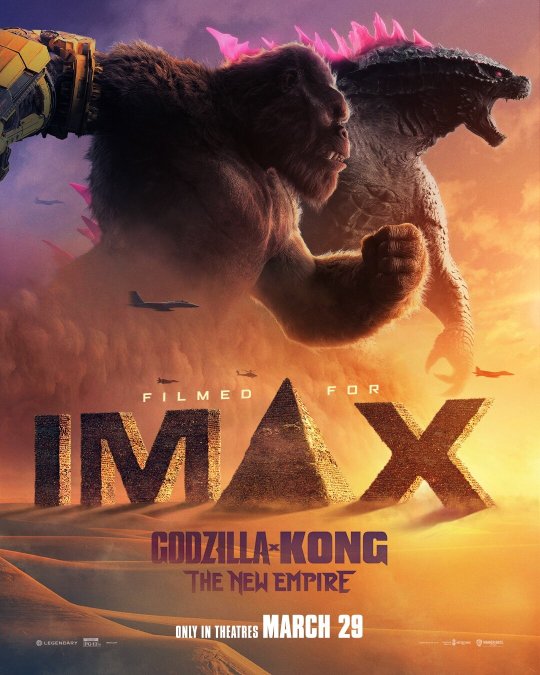
Tickets for Godzilla x Kong: The New Empire have gone on sale in the U.S.—and as a reminder, the brief GKIDS theatrical release of The End of Evangelion wraps tomorrow.
#godzilla minus one#oscars#ultraman tiga#kaiju yarrow#takashi yamazaki#godzilla x kong the new empire#kaiju week in review#godzilla#kaiju
32 notes
·
View notes
Text
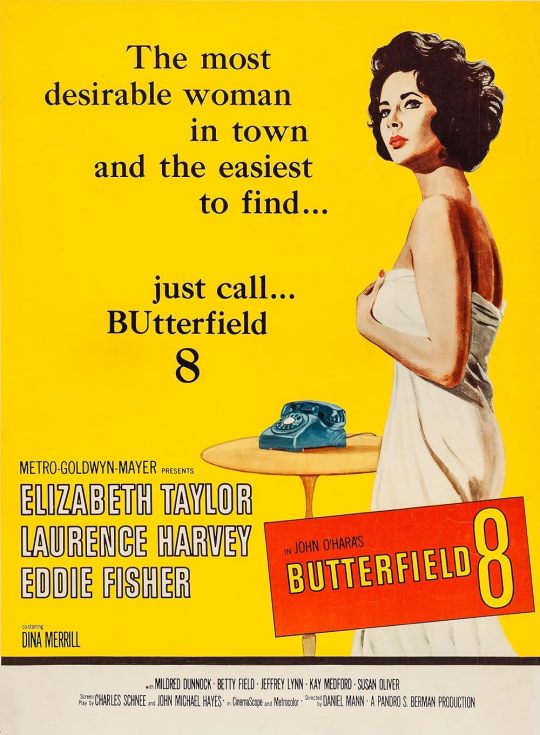
“By the odds, it should be a bomb. But a bomb it is not, let us tell you. At least, it is not the sort of thing to set you to yawning and squirming, unless Elizabeth Taylor leaves you cold. In the first place, it has Miss Taylor, playing the florid role of the lady of easy virtue, and that's about a million dollars right there. "I was the slut of all times," she tells her mother in one of those searing scenes wherein the subdued, repentant playgirl, thinking she has found happiness, bares her soul. But you can take it from us, at no point does she look like one of those things. She looks like a million dollars, in mink or in negligée. When she sits at a bar with Laurence Harvey, who is not just any Joe but a millionaire with a ten-room Fifth Avenue apartment and "caves all over town," and she lets her eyes travel up and down him, measuring not the bulge of his pocketbook but the bulge of his heart—well, all we can say is that Miss Taylor lends a certain fascination to the film. Then, too, it offers admission to such an assortment of apartments, high-class bars, Fifth Avenue shops and speedy sports cars, all in color and CinemaScope, that it should make the most moral status seeker feel a little disposed toward a life of sin. Brandy, martinis and brittle dialogue flow like water all over the place.”
/ Bosley Crowther reviewing Butterfield 8 in The New York Times, 17 November 1960 /
How enticing, huh? Well, you’re in luck: the FREE monthly Lobotomy Room cinema club (devoted to Bad Movies for Bad People) presents gloriously tawdry 1960 melodrama Butterfield 8 on Thursday 21 March at Fontaine’s bar in Dalston! Featuring an incredibly compelling performance from Elizabeth Taylor as an elite high-price escort girl! Numbers are limited, so reserve your seat via Fontaine's website. Alternatively, phone 07718000546 or email [email protected].
#lobotomy room#lobotomy room film club#elizabeth taylor#liz taylor#melodrama#bad taste#bad movies we love#bad movies for bad people#bad movies rule#tawdry#sordid#kitsch#camp#vintage sleaze#vintage smut#film club#london
14 notes
·
View notes
Text











After adjusting for inflation, this week's two films rank in the top 10 highest grossing films of all time.
The Sound of Music is one of those films that everyone should see at least once. It's an absolute classic and the music is catchy. On the other hand, it's a cheesy story once it is forced to get serious in the final act.
Reviews for the film were mixed between corny and brilliant, especially from Bosley Crowther of The New York Times, who seems to be both praising and scolding Andrews and Plummer for their performances. At one point he called the direction "cosy-cum-corny", the meaning of which I'm still unsure.
Reviews for Doctor Zhivago were a mixed bag as well (NYT review also from Crowther). It extends past 3 hours, but to what benefit? Like The Sound of Music, Doctor Zhivago was visually stunning, but it does not seem to have enough plot to justify the run time. Too much of the film seems to be centered on Omar Shariff's solemn, teary-eyed stare.
No matter, the plot is interesting enough to follow and the cast does a great job. While Julie Christie will not will an Oscar for her role of Lara, she will win this year for her role in fellow Best Picture nominee Darling.
The Sound of Music and Doctor Zhivago both entered the 38th Academy Awards with 10 noms and left with 5 Oscars. The two films overlapped on 7 of the 10 categories, splitting almost perfectly down the middle for wins.
Despite being two of the highest grossing films of all time, both films are falling behind typical winners and upsets with their current reception. These Metascores are some of the lowest I've seen so far.
An interesting note for Doctor Zhivago: despite ranking #39 on the AFI's Top 100 in 1998, it became the highest ranked film to not make the 2007 list.
Unofficial Review: Doctor Zhivago feels like Oscar bait. It's whatever. Granted, The Sound of Music is just musical Oscar bait. But at least I enjoyed it.
#oscars#academy awards#38th academy awards#best picture#the sound of music#the sound of music 1965#doctor zhivago#doctor zhivago 1965#1960s#film#1960s film#julie andrews#omar sharif#oscarupsets
2 notes
·
View notes
Text
The Three Caballeros received mixed reviews upon its original release. Most critics were relatively perplexed by the "technological razzle-dazzle" of the film, thinking that, in contrast to the previous feature films up to this time, "it displayed more flash than substance, more technique than artistry."[12] Bosley Crowther for one wrote in The New York Times, "Dizzy Disney and his playmates have let their technical talents run wild."[12] Other reviewers were taken aback by the sexual dynamics of the film, particularly the idea of Donald Duck lusting towards flesh-and-blood women. As Wolcott Gibbs put it[13] in a negative review of the film for The New Yorker, such a concept "is one of those things that might disconcert less squeamish authorities than the Hays office. It might even be said that a sequence involving the duck, the young lady, and a long alley of animated cactus plants would probably be considered suggestive in a less innocent medium."[14]
6 notes
·
View notes
Text

Oscars Flashback
Julie Andrews (pictured with Audrey Hepburn) wins the Oscar for Best Actress for Mary Poppins at the 37th Academy Awards in 1965.
That same year, My Fair Lady won the Best Picture Oscar. Hepburn's casting in the role of Cockney flower girl Eliza Doolittle in My Fair Lady was a source of dispute. Julie Andrews, who had originated the role on stage, was not offered the part because producer Jack L. Warner thought Hepburn was a more "bankable" proposition. Hepburn initially asked Warner to give the role to Andrews but was eventually cast. Further friction was created when, although non-singer Hepburn had sung in Funny Face and had lengthy vocal preparation for the role in My Fair Lady, her vocals were dubbed by Marni Nixon, whose voice was considered more suitable to the role. Hepburn was initially upset and walked off the set when informed.
Critics applauded Hepburn's performance. Bosley Crowther wrote in The New York Times that, "The happiest thing about [My Fair Lady] is that Audrey Hepburn superbly justifies the decision of Jack Warner to get her to play the title role. Gene Ringgold of Soundstage also commented that, "Audrey Hepburn is magnificent. She is Eliza for the ages", while adding, "Everyone agreed that if Julie Andrews was not to be in the film, Audrey Hepburn was the perfect choice." The reviewer in Time magazine said her "graceful, glamorous performance" was "the best of her career". Still, Hepburn did not receive an Academy Award nomination for My Fair Lady.
2 notes
·
View notes
Text

Faye Dunaway and Warren Beatty in Bonnie and Clyde (Arthur Penn, 1967)
Cast: Warren Beatty, Faye Dunaway, Michael J. Pollard, Gene Hackman, Estelle Parsons, Denver Pyle, Dub Taylor, Evans Evans, Gene Wilder. Screenplay: David Newman, Robert Benton. Cinematography: Burnett Guffey. Art direction: Dean Tavoularis. Film editing: Dede Allen. Music: Charles Strouse.
Calling a film a landmark, as Bonnie and Clyde��so often has been called, does it a disservice in that it prioritizes historical significance over the aesthetic ones. It makes it difficult to appreciate or criticize the movie without recalling what it was like to see and to talk about the first time you saw it -- if, like me, you saw it in a theater when it was first released. It's a landmark because its success showed the Hollywood studios, which were mere surviving remnants of the old movie factories of the '30s and '40s, that there was an audience for something other than the big musicals and epics that had dominated American movies during the 1960s. There was a young audience out there that had grown up with the French New Wave and the great Italian and Japanese films of that decade, and was resistant to piety and platitudes. Along with The Graduate (Mike Nichols, 1967), Bonnie and Clyde gave this audience something they were looking for, and fed the revolution in filmmaking that made the 1970s one of the most adventurous decades in film history. It's no surprise that the screenwriters, Robert Benton and David Newman, were so familiar with the New Wave that they wanted François Truffaut or Jean-Luc Godard to direct their movie. And even today Warren Beatty, in the opening scenes of Bonnie and Clyde, is bound to remind one of Jean-Paul Belmondo in Breathless (Godard, 1960). It was a movie that launched the careers of Faye Dunaway and Gene Hackman, not to mention giving Beatty a boost into superstardom. It also put an end to some careers, most notably that of Bosley Crowther, who had been the New York Times's film critic since 1940 but was undone by his vitriolic attack on Bonnie and Clyde, which he denounced not only in his initial review but also, after protests from the movie's admirers, in two subsequent articles. Crowther was replaced as the Times critic in 1968. On the other hand, Newsweek's critic, Joe Morgenstern, initially panned the film but, after being urged by readers to reconsider, recanted his original critique. So the question persists: Historical significance aside, is Bonnie and Clyde really any good? I'd have to say, after seeing it again for the first time in many years, that it holds up as entertainment. The acting is superb, and Burnett Guffey's cinematography, Dean Tavoularis's art direction, and Theadora van Runkle's costuming all provide a fine 1960s interpretation of 1930s style. Where it falls down for me is in substance: The screenplay, which was worked over by Robert Towne, is too preoccupied with Bonnie and Clyde as lovers with (especially Clyde) some psychosexual hangups. It only feints at demonstrating why the pair became cult figures in the Great Depression, most notably in a scene when Clyde refuses to take the money of a farmer who is in the bank they're robbing, and in a scene in which the wounded couple and C.W. Moss (endearingly played by Michael J. Pollard) stop for help at a bleak migrant camp. Only in scenes like these do we get a sense of the deep background of Depression-era misery, a fuller treatment of which might have elevated the film into greatness, the way Francis Ford Coppola's first two Godfather films (1972, 1974) turned Mario Puzo's popular novel into an American myth. Otherwise, the criticism that it glamorizes the outlaws by turning them into fashion-model beauties still has some merit.
7 notes
·
View notes
Text
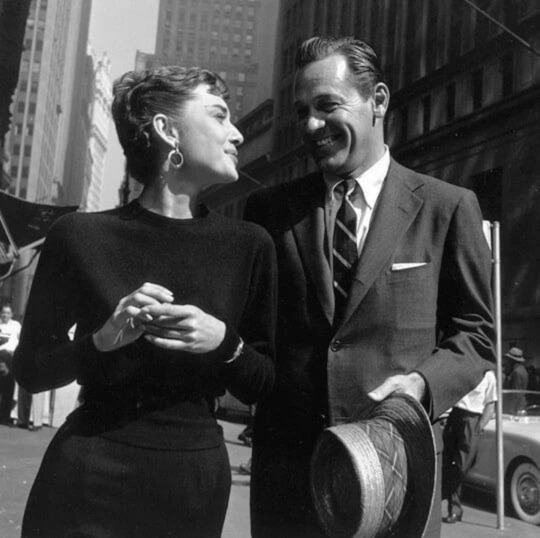
Audrey Hepburn & William Holden during the production of Billy Wilder’s last film for Paramount, the romantic comedy, “Sabrina.” Hepburn and Holden began a brief passionate, well publicized love affair during filming.
Hepburn’s other male costar Humphrey Bogart wanted his wife Lauren Bacall to be cast as Sabrina & complained that Hepburn required too many takes to get her dialogue right and pointed out her inexperience.
Bosley Crowther, writing for The New York Times … praised Hepburn’s performance, “ she is wonderful — a young lady of extraordinary range of sensitive and moving expressions within such a frail and slender frame”.
5 notes
·
View notes
Text
Furious Secrets
The title of the 1950 film The Secret Fury is a bit of a puzzler. Just what does it mean? I’d like to think it refers to the passions aroused in the well-to-do wedding guests when bridegroom Robert Ryan shows up at his high-society nuptials with a rented-tuxedo box tucked under one stalwart arm.
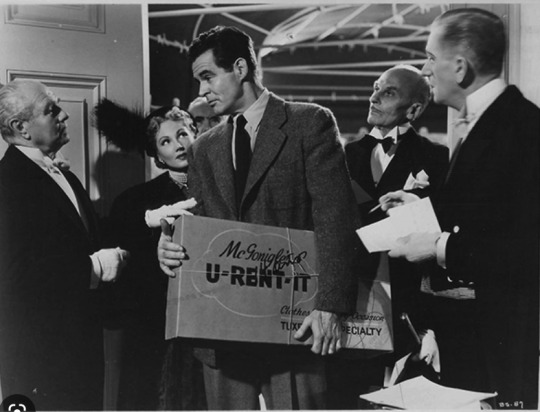
People, as Ibsen’s Judge Brack observed, don’t do such things...
Secret, and not-so-secret, furies abound in the film (up at my Grand Old Movies blog here). There’s local district attorney Paul Kelly, the bride’s former boyfriend thrown over by her for Ryan; later he’s the prosecutor grilling the bride on the witness stand when she’s tried for murder. Or there’s flustered aunt Jane Cowl, who’s thrown into bafflement by her wealthy niece’s wish to marry the hunky, lower-class Ryan — please don’t do anything “eccentric” at the ceremony, she begs the latter. There’s also legal advisor Philip Ober, who always seems too ready to throw in advice, much of which turns out to be not too helpful...
And then there’s the bride herself, starry-eyed Claudette Colbert, whose wedding march is interrupted when a guest raises an objection to the marriage--on account the bride is already married to someone else. That last piece of news throws the bride into a tizzy, which ends up in a murder, for which she’s tried and found guilty, which then lands her in a pricey asylum by reason of insanity. It’s there we finally learn the title’s secret meaning — said to be the suppressed rage within a psychotic mind. No evidence of which, the asylum doctor remarks in puzzlement, shows up in Colbert’s EEG analyses. So, how crazy can she be?
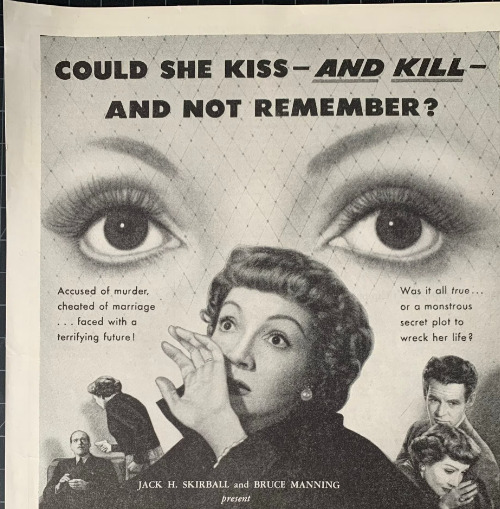
I liked Bosley Crowther’s review of this film as “cheap and lurid twaddle.” It makes it sound so much more exciting than it is. Much of the film is first a back-and-forth search by Colbert for evidence of her earlier wedding, which she says she can’t remember...and then a back-and-forth search by Ryan for murder suspects. In between, the asylum-trapped and make-up-deprived Colbert stares moodily into space or pounds frantically on the piano for emotional release. She then escapes from the asylum —we’re not told how —to confront the One Behind It All, an action I thought showed a lot of gumption on her part, and which I wished could have been more a part of her character.
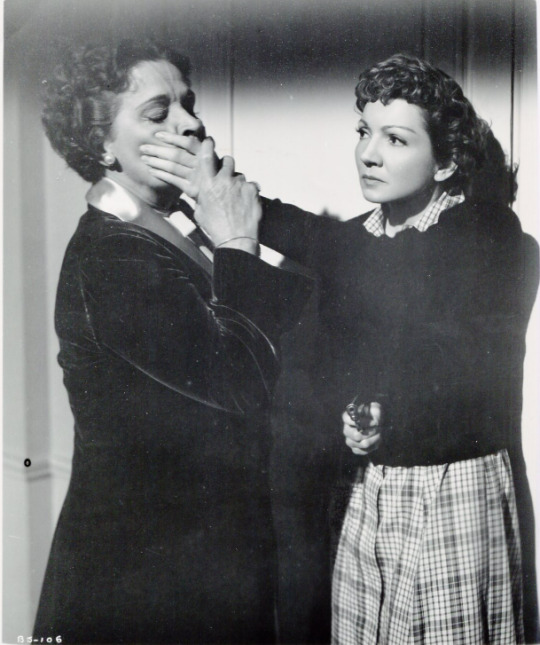
Probably the best thing/s about the film are two brief performances not highlighted in the film’s publicity. The first is an unbilled cameo by Jose Ferrer as an attendee at a jazz session. He doesn’t do much but he looks so right in the scene, the way he listens, with slight rhythmic head nods; and sits, with a mellow attitude and a lank, loose posture. Ferrer is so natural and unassuming, he shows up the other actors as fussy and artificial. I wish his role could have been enlarged.
And the second is Vivian Vance —yes, that Vivian Vance, the beloved Ethel Mertz of I Love Lucy fame —as a chatty hotel maid claiming to have met Colbert during her earlier ‘honeymoon.’ Talk about cheap and lurid. Vance is surprisingly sexy-slutty in her brief bit, looking as cool and hard-boiled as the most glamorous noir femme fatale. Vance didn’t make many films, and she was ambivalent about her fame as Ethel Mertz, due mainly to that character’s utter lack of glamor or sex appeal. I wonder if she would have wished to be remembered for her performance here instead. Ethel Mertz she ain’t.
You can check out my full post on The Secret Fury at my Grand Old Movies blog here. Tuxedos (rented or not) not required.
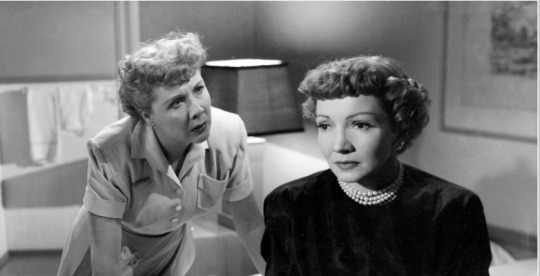
11 notes
·
View notes
Text
I have a strong film buff hatred for David Thompson as a reviewer and film writer who actively upsets me, but a softer disdain for Bosley Crowther, who wrote reviews for the New York Times from the 30s to the 60s and whose every single opinion was unfailingly wrong.
17 notes
·
View notes
Text

"EXQUISITE is only the first word that surges in my mind as an appropriate description of "Elvira Madigan," a Swedish film by Bo Widerberg that was put on at the late show in Philharmonic Hall last night. For exquisite it is in all the lovely and delicate sense of the word as used to define the felicities of sensuous experience.Its color is absolutely gorgeous — as gorgeous as any color photography I've ever seen — and beautifully used to fashion and convey the atmosphere of its theme."
-Bosley Crowther
2 notes
·
View notes
Text
Many have tried to figure out exactly who did what to whom in Howard Hawks's The Big Sleep. Screenwriters William Faulkner, Leigh Brackett, and Jules Furthman are said to have consulted Raymond Chandler, the author of the novel they were adapting, about certain obscurities of the plot, and Chandler admitted that he didn't know either, which is as fine an example of being "in uncertainties, mysteries, doubts, without any irritable reaching after fact and reason," which Keats called "negative capability." So ask not who killed the Sternwoods' chauffeur, or even who really killed Shawn Regan -- if, in fact, Regan is dead. This is one of the most enjoyable of films noir, if a movie that has so many sheerly pleasurable moments can really be called noir. It's also one of the most deliciously absurd -- or maybe absurdist -- movies ever made, including its persistent presentation of Humphrey Bogart's Philip Marlowe as an irresistible hunk, who has bookstore clerks, hat check girls, waitresses, and female taxi drivers swooning at his presence. The only thing that makes this remotely credible is that Lauren Bacall, and not just Vivian Sternwood Rutledge, actually did. In his review for the New York Times, Bosley Crowther, one of the most obtuse critics who ever took up space in a newspaper, called it a "poisonous picture" and commented that Bacall "still hasn't learned to act" -- an incredible remark to anyone who has just watched her exchange with Bogart ostensibly about horse racing. This is, of course, one of Howard Hawks's greatest movies, and of course it received not a single Oscar nomination -- not even for Martha Vickers's delirious Carmen Sternwood. Vickers was so good in her role that her part had to be trimmed to put more focus on Bacall, who was being groomed for stardom. Sadly, Vickers never found another role as good as Carmen. Dorothy Malone, who did go on to stardom and an Oscar, steals her scene as the bookstore owner amused and aroused by Marlowe's charisma. And then there's Elisha Cook Jr. as a small-time hapless hood not far removed from the Wilmer who stirred Sam Spade's homophobia in The Maltese Falcon (John Huston, 1946). Except this time his demise elicits something from Marlowe that Spade was incapable of: pity.
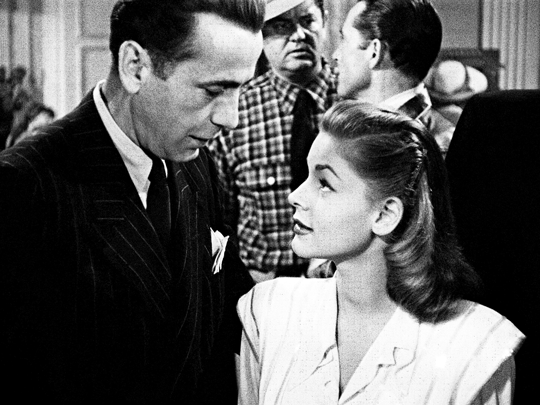
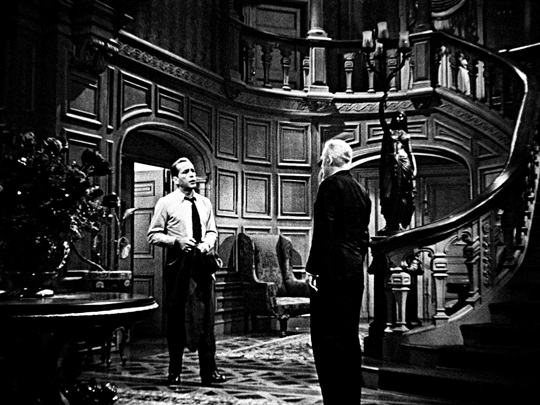
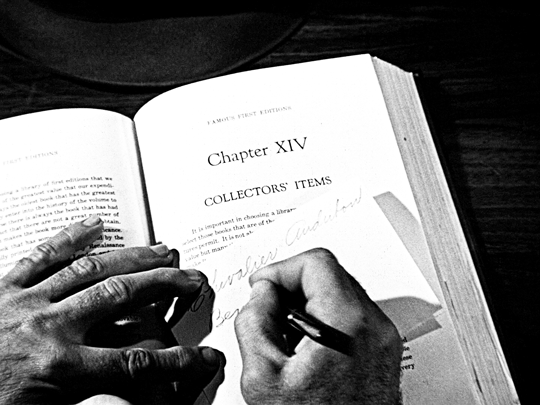
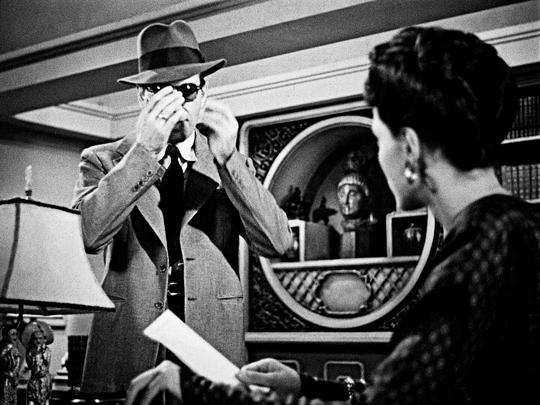
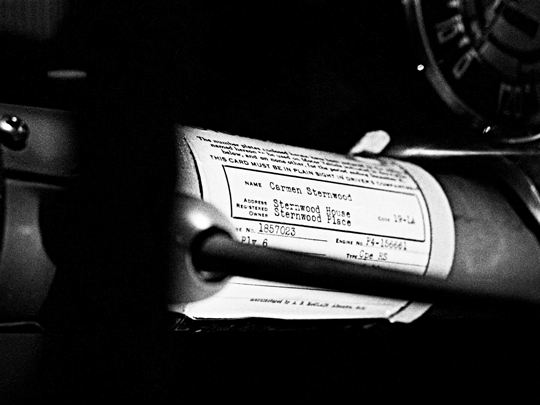
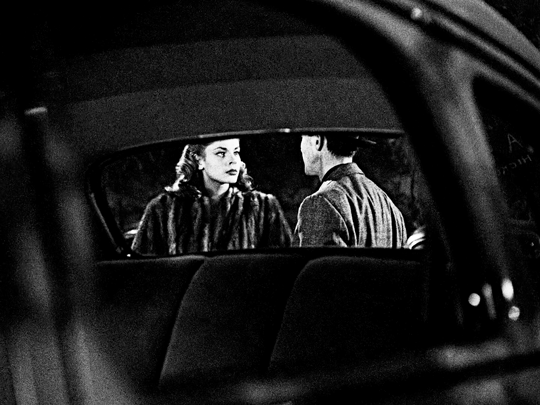
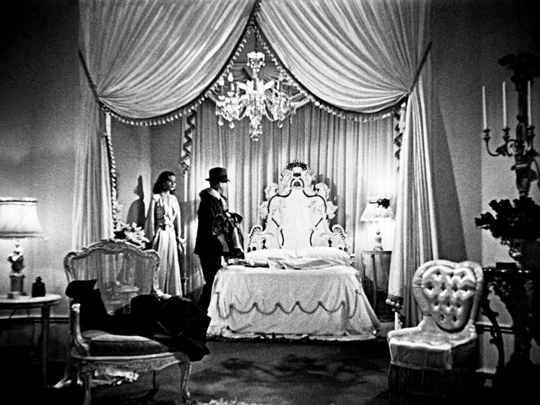
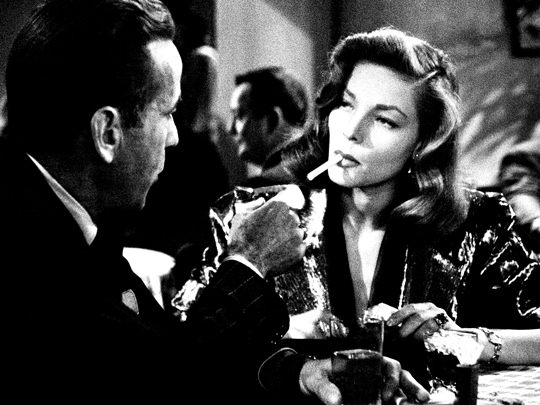
What's the matter? Haven't you ever seen a gun before? What do you want me to do, count three like they do in the movies? THE BIG SLEEP (1946) dir. Howard Hawks
439 notes
·
View notes
Video
Joan Caulfield by Truus, Bob & Jan too! Via Flickr: Dutch or Belgian postcard, no. Ax 479. Photo: Columbia. American actress Joan Caulfield (1922-1991) started as a fashion model. After being discovered by Broadway producers, she began a successful stage career in 1943. Paramount signed her and she starred in romantic comedies such as Dear Ruth (1947) and Film Noirs like The Unsuspected (1947). She was hailed in her time as one of the screen's great beauties, many of her cameramen said she was one of the few women in Hollywood whom it was virtually impossible to photograph badly. Beatrice Joan Caulfield was born in 1922 in West Orange, New Jersey. She was one of three daughters to Henry R. Caulfield, an aircraft company administrator based in Manhattan. She attended Miss Beard's School in Orange, New Jersey. During her teenage years, the family moved to New York City, where she attended Columbia University in late 1940. Her early forays into acting with the Morningside Players acting troupe did not appear to suggest any special talents in that direction, so she turned her ambitions towards a modelling career. Joan's exceptional looks and demure personality soon secured her top fashion shoots through the Harry Conover Agency, including a Life magazine cover in 1942. This caught the attention of renowned Broadway producer George Abbott who asked her to audition for a small part as Veronica, a dumb blonde in his upcoming production of 'Beat the Band'. While the musical was poorly received, critics singled out for praise of Joan's "decidedly winsome" looks and her budding comedic talent. Abbott stuck with her and cast her as the female lead in his 1943 comedy 'Kiss and Tell', co-starring as her brother a young Richard Widmark. This time, Joan attracted rave reviews for her "natural and endearing" performance and was voted most promising actress in the New York Drama Critics annual poll. After fourteen months and 480 shows, Joan quit the cast of 'Kiss and Tell' in early 1944. She was replaced by her sister Betty Caulfield. The play went on for 962 performances, was filmed twice and turned into a TV and radio series as Meet Corliss Archer (1954). Though initially reluctant to forsake the stage for motion pictures, Joan Caulfield succumbed to an offer from Paramount in early 1944. Her contract even included a special clause permitting her to work on Broadway for six months each year. Paramount put Caulfield in a lead role in her first film: Miss Susie Slagle's (John Berry, 1946) with Veronica Lake. During her tenure with the studio (1944-1950), she appeared in eleven films including a couple of loan-outs to Warner Brothers and Universal, respectively. As a leading lady, she was genteel, cultured and alluring, without exuding too much overt sex appeal. Often, she was merely decorative. As love interest to both Fred Astaire and Bing Crosby in Blue Skies (Stuart Heisler, Mark Sandrich, 1946), Bosley Crowther of the New York Times considered her "most lovely and passive". Nevertheless, the picture was a huge hit and Joan found herself in number ten spot on Variety's list of 1946 top-grossing actresses, despite the inescapable fact, that, as a dancing partner to Astaire, she was barely adequate. In the course of her later films, it also transpired that she was not particularly convincing as a dramatic actress. Joan did, however, come into her own in breezy comedy roles such as a chambermaid in Monsieur Beaucaire (George Marshall, 1946) opposite Bob Hope. Crowther called her performance "delightfully nimble". The highlight of her Hollywood career was a starring role opposite William Holden in the wholesome family comedy Dear Ruth (William D. Russell, 1947). From the play by Norman Krasna allegedly based on the household of Groucho Marx, the picture was box office gold. Joan was to be typecast in peaches and cream roles thereafter. Joan Caulfield was loaned out to Warner Brothers for the mystery thriller Perfect Alibi (Michael Curtiz, 1947). I.S. Mowis at IMDb: "A victory of style over content, thanks mainly to taut direction by Michael Curtiz". Warner also cast her in the all-star musical jamboree Variety Girl (George Marshall, 1947), getting rather lost among the more extrovert performers. Her other loan-out was to Universal for Larceny (George Sherman, 1948), in which she played a naive widow, conned by a hustler (John Payne) out of a large sum of money for erecting a bogus monument to her late husband. Dear Wife (Richard Haydn, 1949) was also a sequel to Dear Ruth, chiefly enjoyable for the histrionics of that excellent character actor, Edward Arnold. By this time, Joan had come to reject her wholesome image, referring to George Abbott who had once quipped that "she looked better on a tennis court than in bed". Increasingly dissatisfied with her assignments, Joan later claimed to have been poorly advised by drama coaches, agents and studio executives alike. She also blamed herself for some of her choices. Her contract was not renewed in 1949 and Joan freelanced from then on, but the choice of roles in films remained elusive. The Petty Girl (Henry Levin, 1950), The Lady Says No (Frank Ross, 1951) and The Rains of Ranchipur (Jean Negulesco, 1955) were all decidedly trite, lacklustre affairs, later to be followed by a trio of dismal low-budget Westerns. Television anthologies offered her some relief from typecasting. Joan starred in her own NBC comedy series, Sally (1957). It was produced by her then-husband, Frank Ross, and boasted an impressive supporting cast, including Gale Gordon, Arte Johnson and Marion Lorne who received an Emmy nomination. As fortunes would have it, the series fared poorly in the ratings because of its unfortunate time slot which put it up against top-ranking shows like Maverick (1957) and Bachelor Father (1957). She had the occasional role in a feature, such as Cattle King (Tay Garnett, 1963) with Robert Taylor, Red Tomahawk (R. G. Springsteen, 1967) and Buckskin (Michael D. Moore, 1967) with Barry Sullivan. Yet another setback to her career was the 1963 play 'She Didn't Say Yes' which folded before making it to Broadway. In the end, Joan Caulfield reinvented herself as a businesswoman with considerable financial acumen on the stock exchange, becoming vice president of Lustre Shine Co. Inc., a company which produced and installed self-polishing machines in airports and hotels. There were also two divorces and several lawsuits which kept her name in the public consciousness. In 1971, she received some good notices for performing in Neil Simon's play 'Plaza Suite' at the Showboat Dinner Theatre in Florida. Joan made several more guest appearances on television, her last in an episode of Murder, She Wrote (1984). In 1971, she fittingly commented in The Evening Independent on her show business career: "Before 1952, I was just playing myself, then I learned to be an actress". Joan Caulfield was married Twice. In 1950, she married director Frank Ross. They had a son, Caulfield Kevin Ross (1959), and divorced in 1960. That year, she married Dr. Robert Peterson. They had another son, John Caulfield Peterson (1962), and divorced in 1966. Joan Caulfield died in 1991, two weeks after cancer surgery in Los Angeles. Her ashes were scattered in the Pacific Ocean. Sources: I.S. Mowis (IMDb), Wikipedia and IMDb. And, please check out our blog European Film Star Postcards.
#Joan Caulfield#Joan#Caulfield#American#Actress#Girl#Woman#Hollywood#Film#Star#Movie Star#Cinema#Cine#Kino#Picture#Screen#Movie#Movies#Filmster#Film Star#Glamour#Allure#Vintage#Postcard#Columbia#Telephone#flickr
1 note
·
View note
Text
Movieland Mystery Photo
For Monday, we have a mysterious fellow. A note about this week’s mystery movie: Because the Internet Archive is down, making Lantern unusable, I decided to get a recommendation for Bosley Crowther. He liked this mysterious movie

View On WordPress
1 note
·
View note


